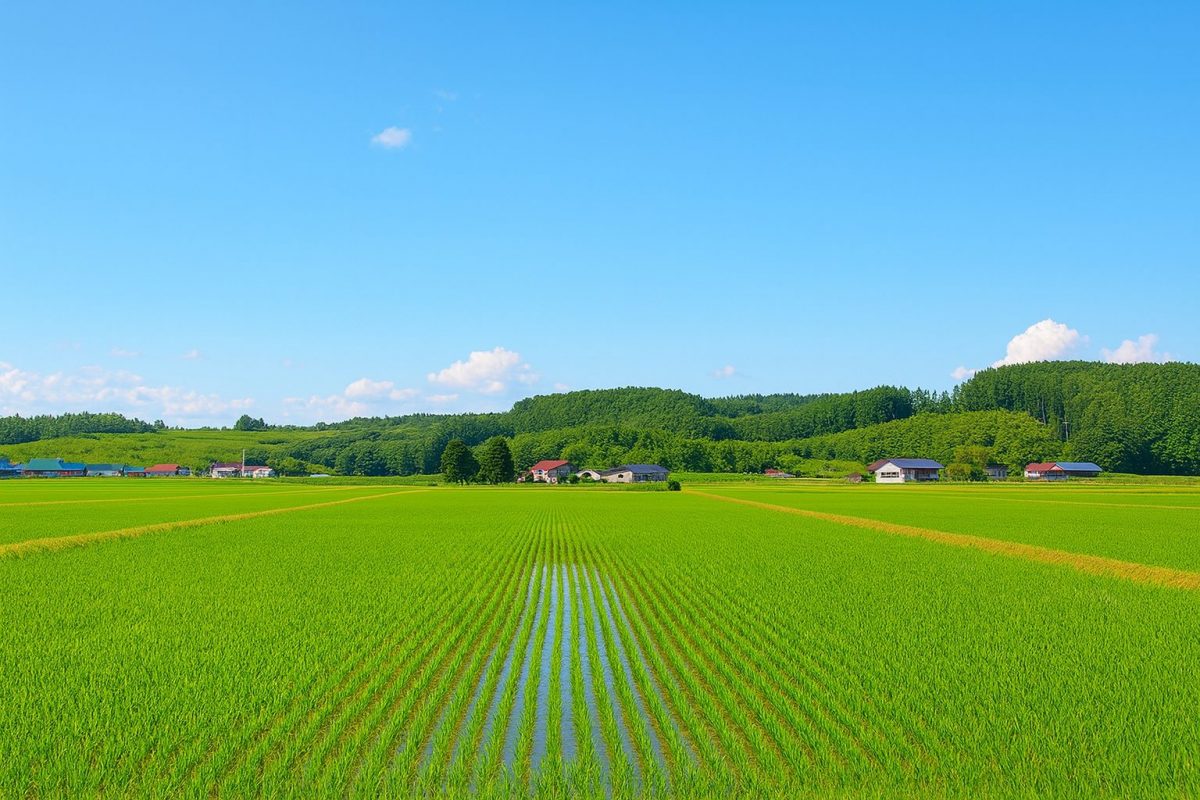| population | 4,226peoples |
|---|---|
| area | 405.38 km² |
| population density | 10.4 peoples/km² |
Located in the southern part of Hokkaido within the Yufutsu District of the Iburi Subprefecture, Atsuma Town is a peaceful agricultural community surrounded by rich natural beauty. The Atsuma River flows through the center of the town, connecting the Yūbari Mountains with the Pacific Ocean. The town’s name is said to derive from the Ainu word “Atto-mam,” meaning “the wetlands beyond,” reflecting its historical connection to nature and wetlands. Today, Atsuma is one of Hokkaido’s leading rice-producing regions and is also renowned for cultivating haskap berries—the town has the largest production area of this fruit in Japan. On the Pacific coast, the Hama-Atsuma area is a famous surfing spot that attracts surfers from all over the country. With comprehensive support for child-rearing and relocation programs, Atsuma offers both the serenity of nature and the convenience of access to nearby urban centers such as Chitose and Tomakomai. It is a community where people and the environment live in harmony.
Culture and Traditions
The culture and traditions of Atsuma Town reflect a deep history shaped by Ainu heritage and the spirit of Hokkaido’s early settlers. Archaeological findings show that people have lived in this area for over 14,000 years, from the Paleolithic era through the Jomon and Satsumon periods. Artifacts from the Ainu culture, including pottery and hunting tools, have been excavated in the Kamimai and Horonai districts, highlighting the region’s long human history. Agriculture remains at the heart of Atsuma’s lifestyle, especially rice cultivation, which boasts the largest acreage in the Iburi region. The town’s signature fruit, the haskap berry, was officially registered as a regional collective trademark in 2024, enhancing Atsuma’s recognition across Japan. Local people are known for their warmth and hospitality, often speaking the distinctive Hokkaido dialect, which preserves some Ainu linguistic influences. Festivals such as the “Inaka Festival,” “Coastal Festival,” and “Lantern & Star Festa” bring residents and visitors together, celebrating the town’s close relationship with the seasons and nature. Atsuma’s cultural life embodies harmony—between people, community, and the land they inhabit.
Local Specialties
- Atsuma Haskap Berries: Atsuma is Japan’s largest producer of haskap berries. The registered varieties “Atsuma Mirai” and “Yūshige” are known for their sweetness and large size, used in jams, jellies, and wines.
- Atsuma Rice: Premium brands such as “Tantoumai” and “Sakura Rice” are cultivated using the clear waters of the Atsuma River. These varieties are praised for their delicate flavor and texture.
- Azuma Jingisukan (Grilled Lamb): A beloved local dish marinated in a sweet-savory sauce, enjoyed by generations of residents. It’s also popular as a local specialty for gifts and regional fairs.
- Atsuma Potatoes (May Queen): Grown in the town’s fertile volcanic soil, Atsuma’s potatoes are fluffy, slightly sweet, and perfect for croquettes or stews. They can be found at the local roadside station, Michinoeki Atsuma.
- Homemade “Ofukuro” Miso: A traditional miso paste made from locally grown soybeans, cherished as the taste of home in Atsuma households for generations.
Annual Events
- Inaka Festival (June): Atsuma’s biggest summer kick-off event featuring local food stalls, stage performances, and hands-on agricultural experiences that attract visitors from neighboring towns.
- Coastal Festival (July): Held at Hama-Atsuma Beach, this seaside celebration includes surfing competitions, live music, and seafood BBQs right by the Pacific Ocean.
- Lantern and Star Festa (February): A winter highlight where the town glows with handmade paper lanterns and ice candles, creating a magical atmosphere against the snowy landscape.
- Atsuma Snow Festival (February): Local families and visitors enjoy snow sculptures, sledding, and warm food stalls celebrating the joy of Hokkaido’s winter.
- Autumn Harvest Festival (September): A thanksgiving event celebrating the year’s agricultural bounty, offering fresh rice, haskap products, and traditional taiko drum performances.
Access
- By Car from New Chitose Airport (approx. 50 min): Take the Hidaka Expressway for a direct and scenic route through Hokkaido’s countryside.
- By Car from Sapporo (approx. 1 hr 30 min): Travel via the Dōō Expressway and Hidaka Expressway for a comfortable drive surrounded by Hokkaido’s rural landscape.
- By Train and Bus: From JR Muroran Line stations such as “Hayakita” (in Abira Town) or “Shiraoi,” transfer to the Atsuma Bus network to reach local destinations.
- By Ferry: Tomakomai East Port Ferry Terminal (Hama-Atsuma area) connects Hokkaido with Niigata and Tsuruga via major domestic ferry lines.
Tourist Attractions
- Atsuma Dam – A picturesque reservoir surrounded by forests, known for its stunning autumn foliage and serene walking trails.
- Kobushi-no-Yu Atsuma – A popular hot spring facility offering open-air baths and a restaurant serving locally sourced dishes.
- Atsuma General Park – A large recreational park featuring sports fields, a playground, and a park golf course for all ages.
- Karimai Archaeological Site – An important site displaying artifacts from the Jomon, Satsumon, and Ainu periods, offering insight into the region’s ancient culture.
- Atsuma Shrine – The town’s main Shinto shrine and the venue for the grand Atsuma Festival, deeply rooted in local tradition.
